

Grading paper money is a subjective art — It is mix of technical and asthetics, and the final assessment is an individual's own opinion. Some of the many grades commonly seen are presented below. Professional third-party grading services use a slightly modified version of the Seldon Scale developed by Dr. William Sheldon in 1949 — It is a scale of 1 to 70 with 70 being a "Perfect New" note and "1" being a really poor note.
Grade Variations
Instead of the 1 to 70 scale that professional third-party grading services use, some people (including IBNS) use a descriptive scale:
Some people will split grades when grading a note — For example, VG-F means the note is graded between "very good" and "fine".
Some people will use a plus sign, "+", to designate that the grade is slightly above a grade, but not quite to the next grade. For example, if a note should be classified between XF and AU, it can be given a grade of XF+ or XF++. A note with a grade of XF+ should be located in the middle of XF and AU on a graduated line while a note with a grade of XF++ should be very near the AU boundary mark.
PMG indicates that typically 30 is the lowest grade that they will give and EPQ designation. However, they have had a limited amount of notes that they designated 25EPQ.
PCGS has graded a note as low as 20 with a PPQ designation.








The note below grades "APPARENT Choice New 63" because it is stained.
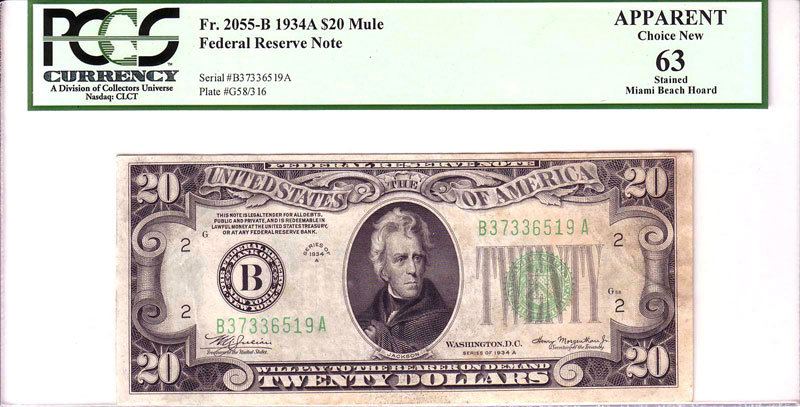
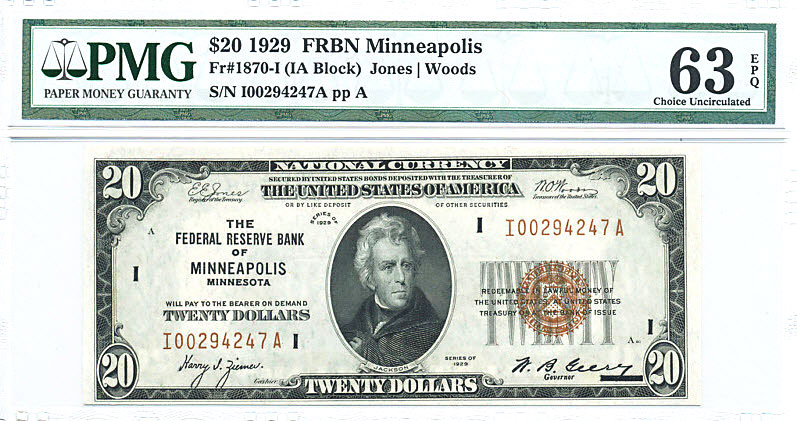


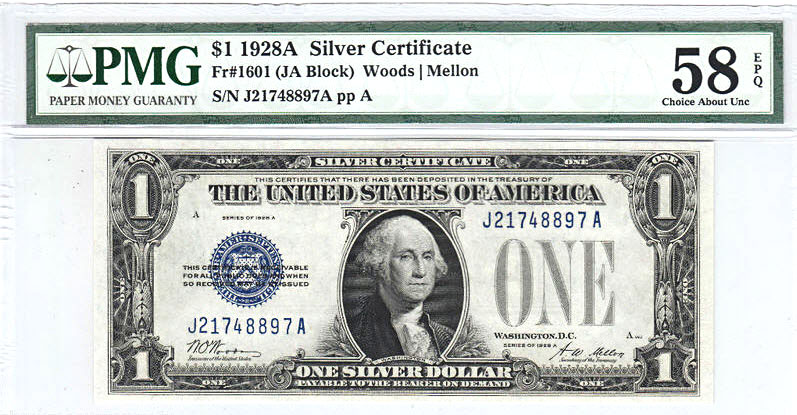



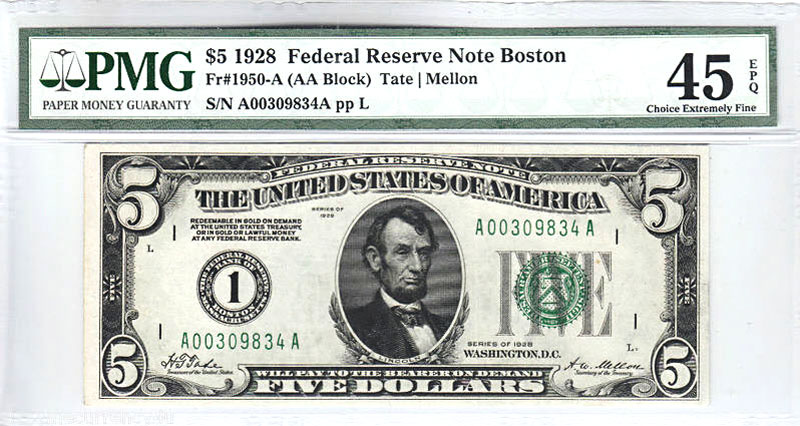

The note below grades "APPARENT Extremely Fine 45" because there are stains on the back of the note.
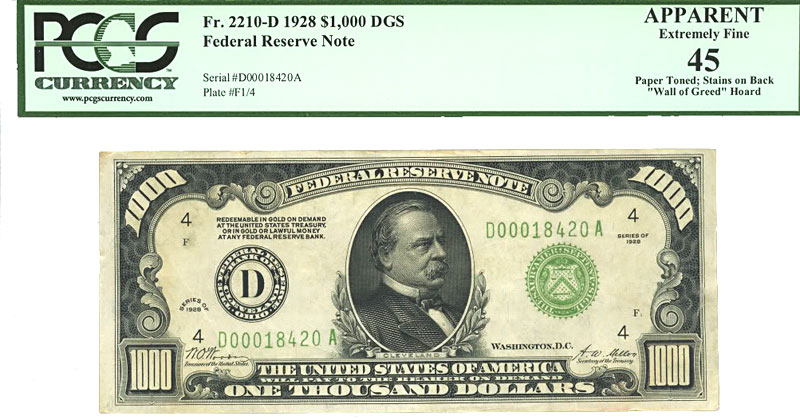
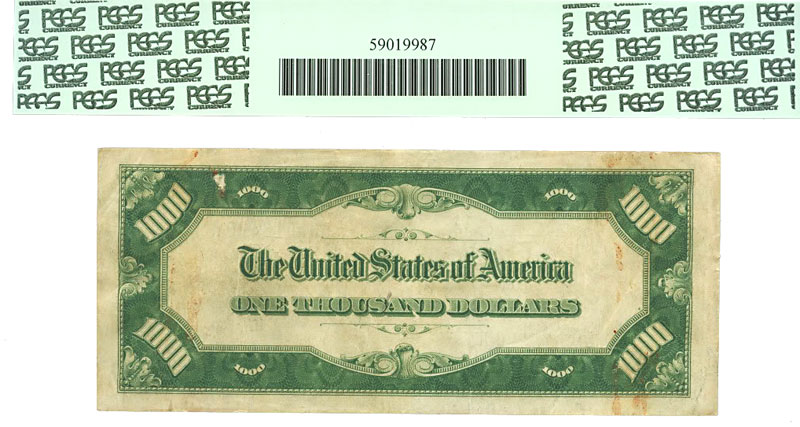

Three folds, one of which may be horizontal. Little, if any, circulation.[ PMG Grade ]
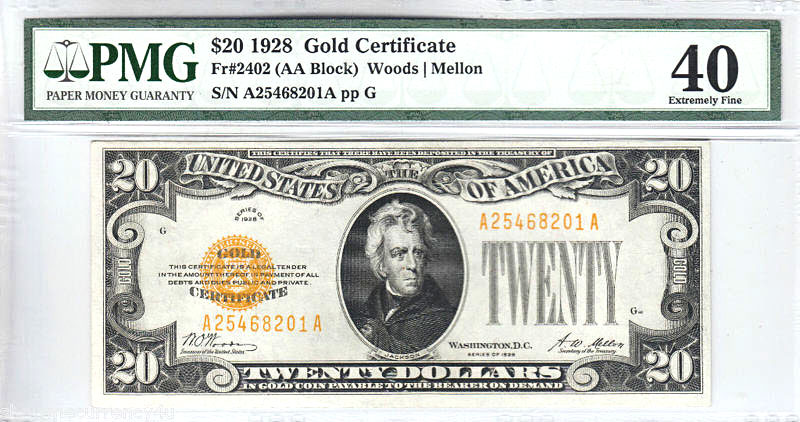
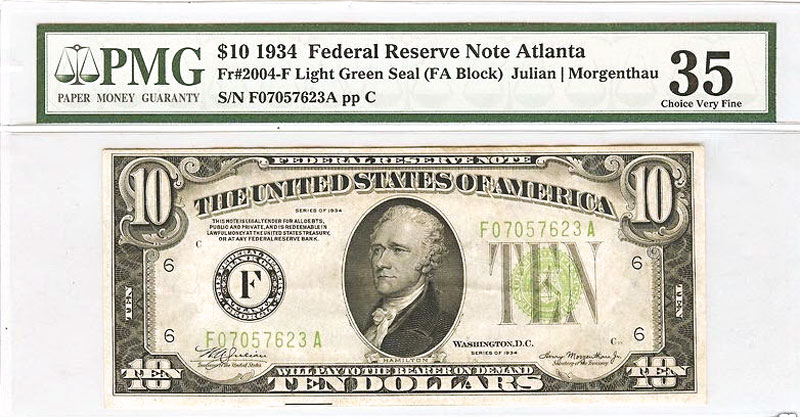


Still crisp, but may show a bit of circulation or light soiling. May have several light folds. [ PMG Grade ]
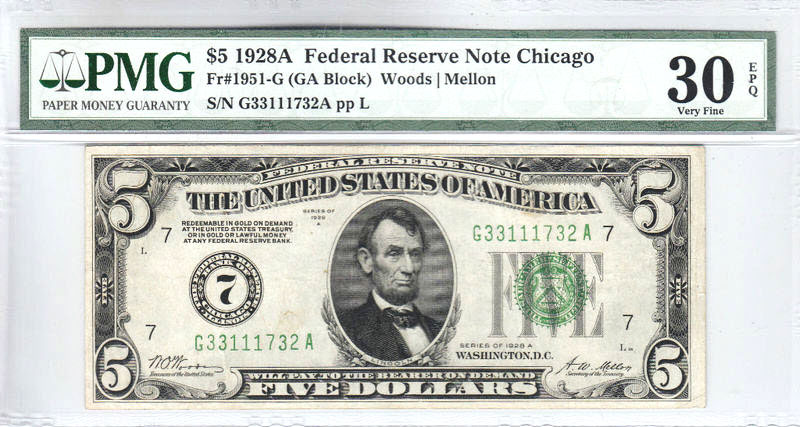

Any note with a major problem will be placed into a PCGS Currency "Apparent" grade holder with the problem described. For example, the note below has been washed.
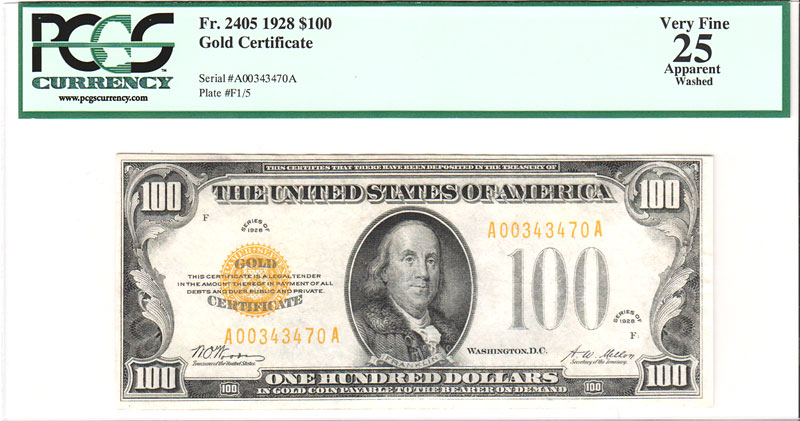

Moderate circulation with numerous folds, mild soiling but no serious detractions. A solid note but may have a minor defect. [ PMG Grade ]
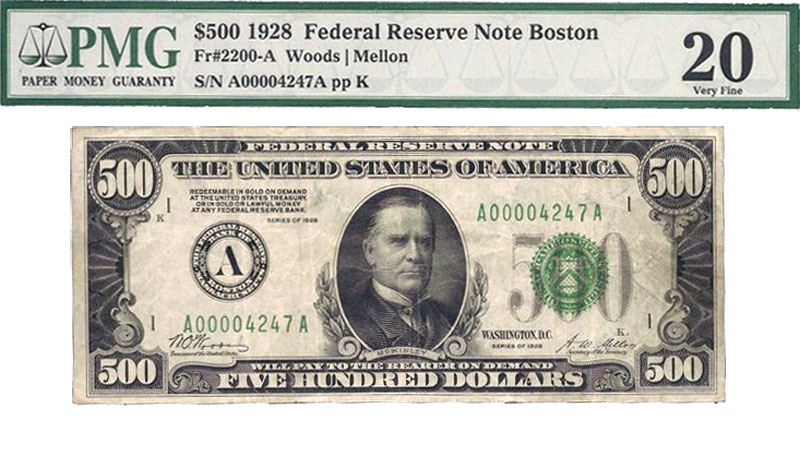
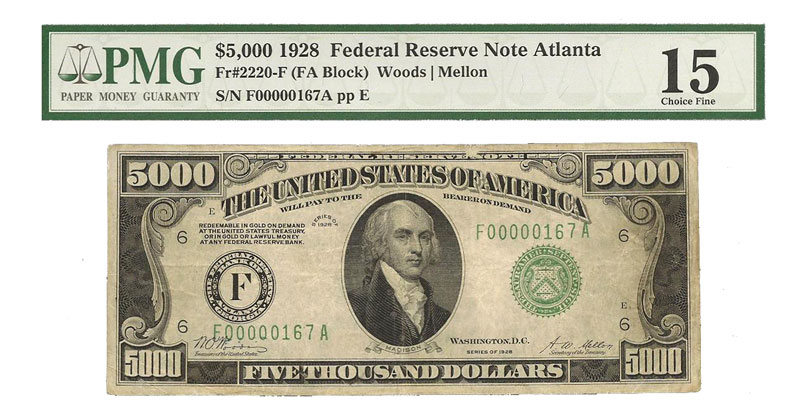
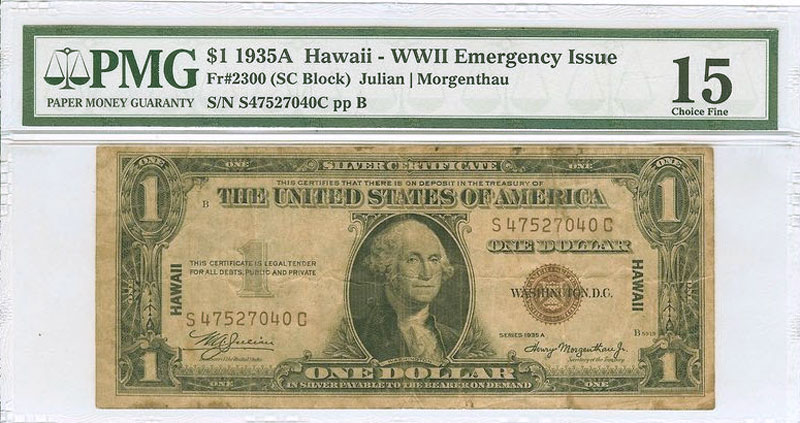

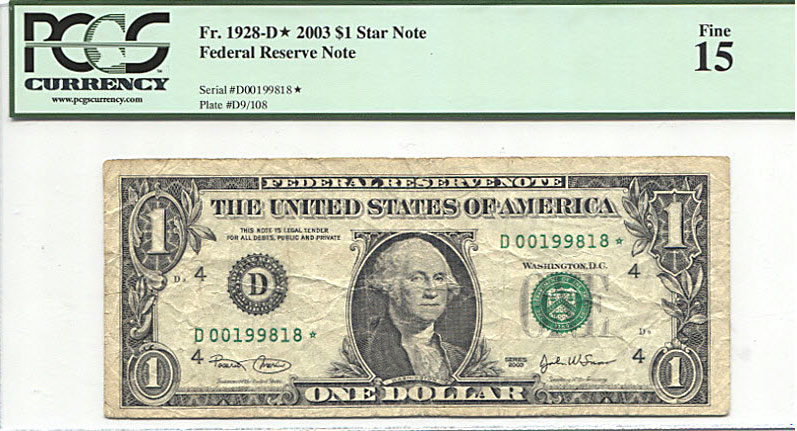
The note below grades "APPARENT Fine 15" because an edge tear was repaired with tape.
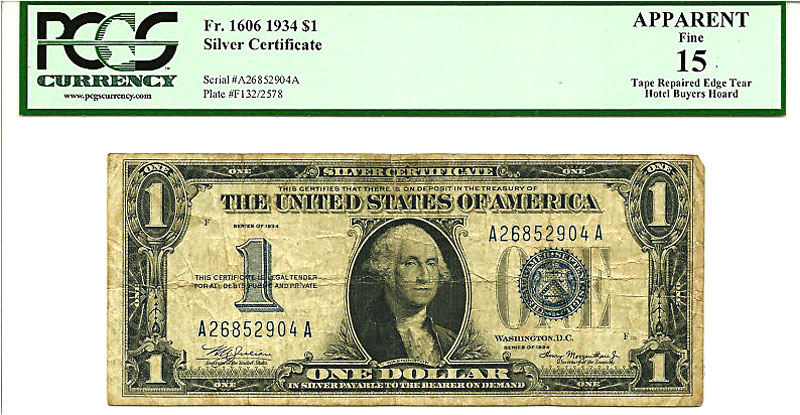

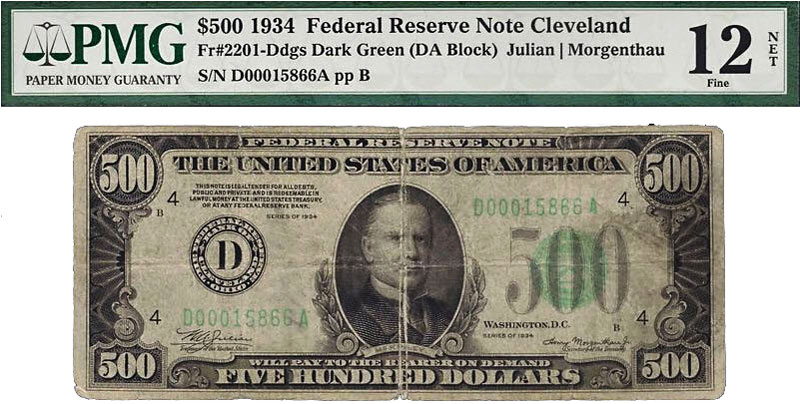
A solid, whole note with lots of circulation. Too limp or too many minor problems to make a fine grade. [ PMG Grade ]

The note below grades "Apparent Very Good 10" because it has edge tears.



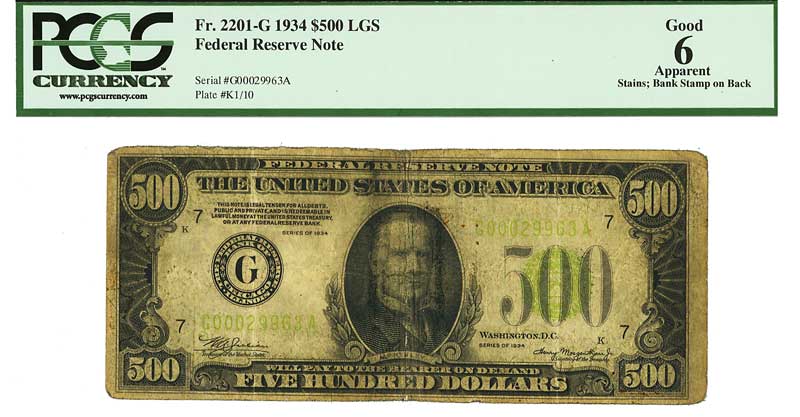
Very heavily circulated note with numerous small problems. Totally limp with impaired visual appeal. Commonly seen with small pieces missing. [ PMG Grade ]

PMG indicates that grades under 4 Good are generally not collectible unless the note is rare. Most notes at these grade levels are "Net" graded due to major problems. |



|
|
|
|
|
|
|
|
||
| |
|
|
|
|
|
|
|
|
|
| Edges |
|
|
|
|
|
|
|||
| Folds |
|
|
|
|
|
||||
| Paper color |
|
|
|
|
|
|
|
||
Tears |
|
|
|
|
|||||
| Holes |
|
|
|
||||||
| Integrity |
|
|
|
|
|||||